Nasal septal defects are a common pathology in children and adults, requiring radical treatment (surgery). This pathology is not life -threatening, but is a significant cosmetic defect. Correction of the nasal septum (septoplasty) is performed according to strict instructions.
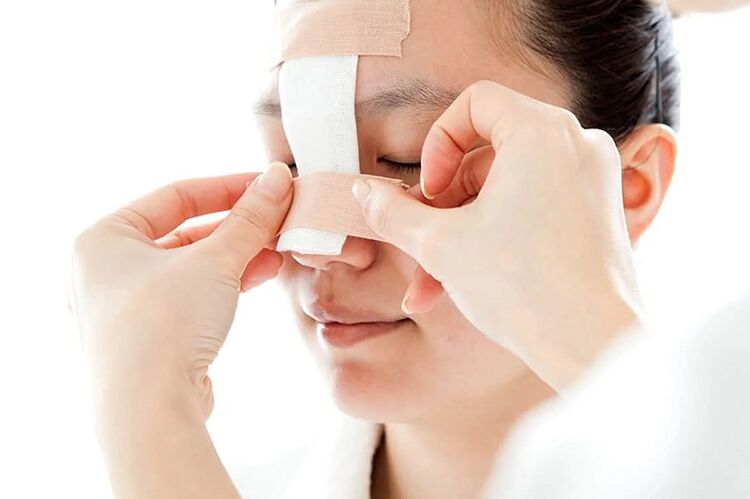
Varieties and causes of septal defects
There are the following types of defects:
- Curvature. A condition in which the nasal septum deviates from a straight axis. This pathology is a common cause of chronic rhinitis, difficulty breathing, sinusitis and tonsillitis (inflammation of the tonsils). Curvature is physiological (congenital), trauma and compensatory (with a background of polyps), S -shaped, horizontal, C -shaped, vertical, in front or back.
- Holes. With this pathology, through holes form in the cartilage tissue. Pathology occurs as a result of rupture of peri-cartilage tissue and detachment of the submucosa.
- The back sank. Occurs against a background of trauma and abscesses. It is characterized by flattening the bone tissue and shortening the back.
The causes of a deviated nasal septum are:
- Injuries (bruises, falls). Risk groups include men and boys. Athletes (boxers, karate fighters, wrestlers, mixed martial arts fighters) are more prone to injuries. The defect develops with a strong impact, with the background of the osteochondral plate replaced. Often, deformities occur when improper adhesion after a fracture.
- Abnormal growth of skull bones. The large size of the nasal cavity induces bending of the septumThis is a compensatory response.
- Rare anomalies (strong development of Jacobson foundation). Limits space for the growth and development of the septum.
- Chronic unilateral rhinitis. Nasal congestion on one side can cause curvature.
- Growth.
- Abscess.
- Hypertrophy (proliferation) of the sinuses.
- Complicated offspring (curvature of the nose in the elderly).
- Polyps.
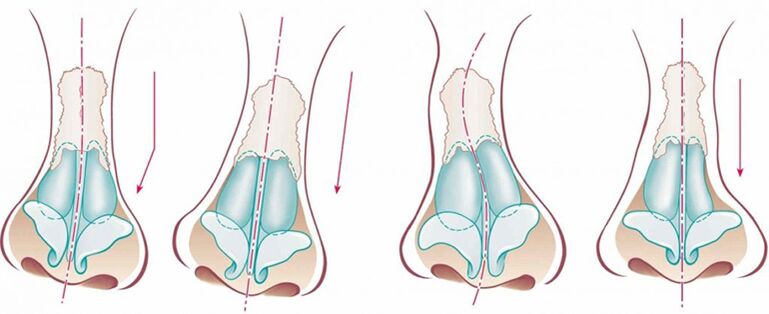
External manifestations and internal symptoms
If a person has a curved nasal septum, then the following symptoms are possible:
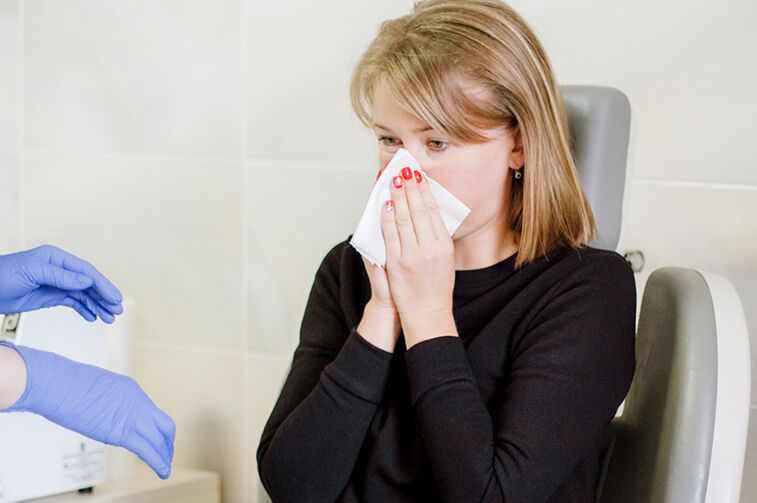
- Violation of breathing through the nose. Light and heavy enough that one breathes only through the mouth. The absence of these symptoms does not exclude the presence of disability.
- Chronic rhinitis. It occurs as a result of ventilation disturbances and microbial multiplication.
- Frequent allergic reactions.
- Congestion.
- Swelling of the mucous membranes.
- Headache. It occurs against the background of congestion, complications in the form of sinusitis (sinusitis), increased pressure on the mucous membranes and irritation of receptors.
- Frequent episodes of ARVI. Manifested by cough, sneezing, fever.
- Dry mucous membranes.
- Sore nose.
- Sleep apnea. Respiratory arrest during sleep.
- Snoring.
- Sleep disturbances.
- Asthenic manifestations in the form of decreased performance, lethargy, weakness. The reason is lack of oxygen.
- Changes in the shape of the nose (deviation, depression of the back).
- Deterioration of attention and memory.
Less commonly, symptoms such as cough, sweating, decreased odor, tinnitus, dryness, runny nose, changes in facial expressions (open mouth, bite changes) were observed.
Diagnosis of disability severity
The following studies allow you to identify the defect and its severity:
- Computed tomography (detecting spine, ridges and related diseases).
- MRI. It is performed if a neoplasm is suspected.
- Rhinoscopy (examination of the nasal cavity).
- Endoscopy. Tubes with cameras are used.
- Rhinometry (changes in airflow and degree of congestion disturbance).
- Visual inspection.
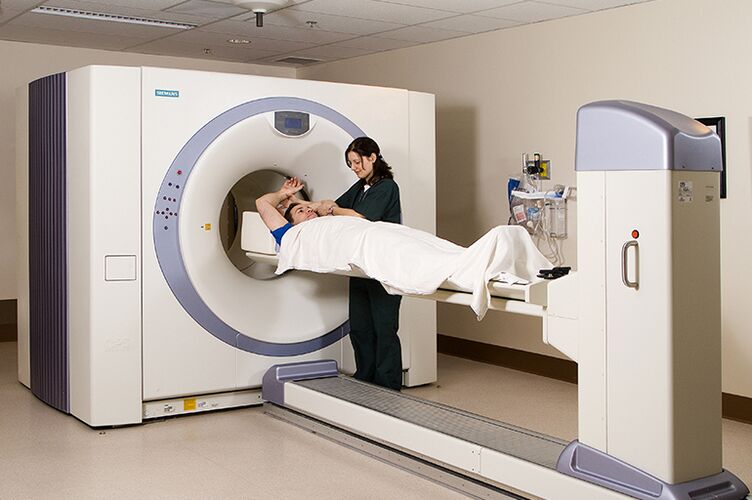
In addition, analyzes were performed (allergy tests, smear bacteriological examination, clinical blood tests) and surveys.
Methods of treatment
Removal of the defect can only be done with surgery. This operation is called rhinoplasty. Conservative therapy is ineffective.
Which doctor to contact
If you have symptoms of septal defect, you must see an ENT doctor (otorhinolaryngologist). You may also need to see a surgeon.
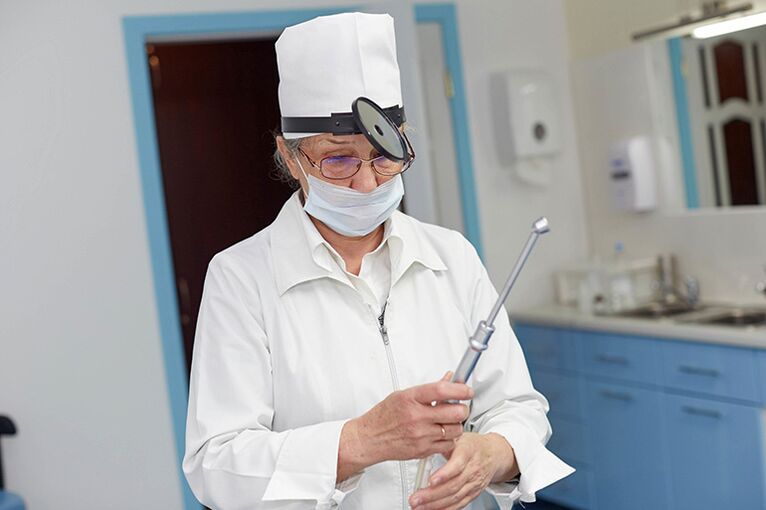
Conservative treatment
Conservative treatment aims to eliminate edema and symptoms (runny nose, congestion). Saline solutions, sprays and vasoconstrictor drops can be used. Laser therapy is often performed.
Surgical intervention (septoplasty)
Septoplasty is the corrective surgery of the nasal septum. Often it is done endoscopically without incision using a monitor and camera. The benefits include:
- rapid recovery;
- efficiency;
- simplicity;
- blood loss and minimal trauma;
- the presence of antiseptic effect (when using a laser).
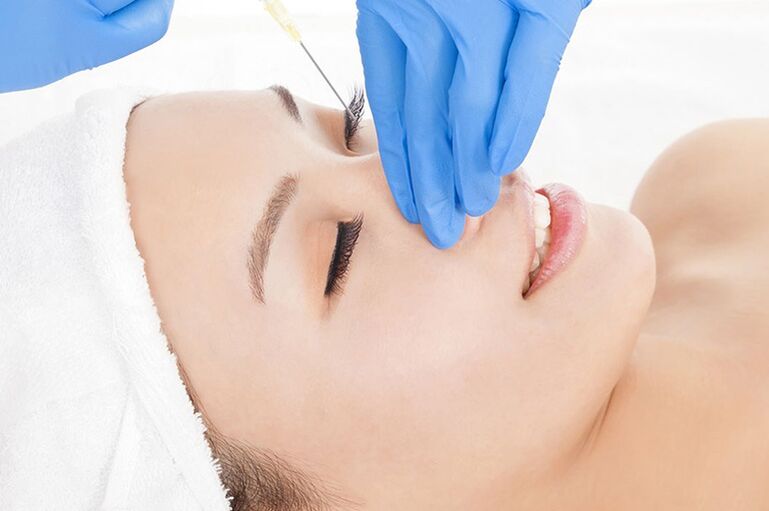
More rarely used resection or septochondroprotection methods. Before septoplasty is performed, the degree of nasal breathing difficulty and the age of the patient are taken into account.
Indications for surgery
The indications for nasal surgery are:
- hard to breath;
- the presence of chronic rhinitis;
- ear infections;
- severe headache;
- significant cosmetic defects;
- resdung;
- obvious snoring;
- regular runny nose.
Contraindications to surgery
Surgical correction of the nasal septum is contraindicated:
- elderly patient,
- with hemophilia (blood clotting disorder),
- severe heart disease,
- mental disorder
- diabetes,
- cancer,
- severe forms of infection,
- arterial hypertension,
- during the flowering period of plants (with allergies),
- during pregnancy,
- breastfeeding.
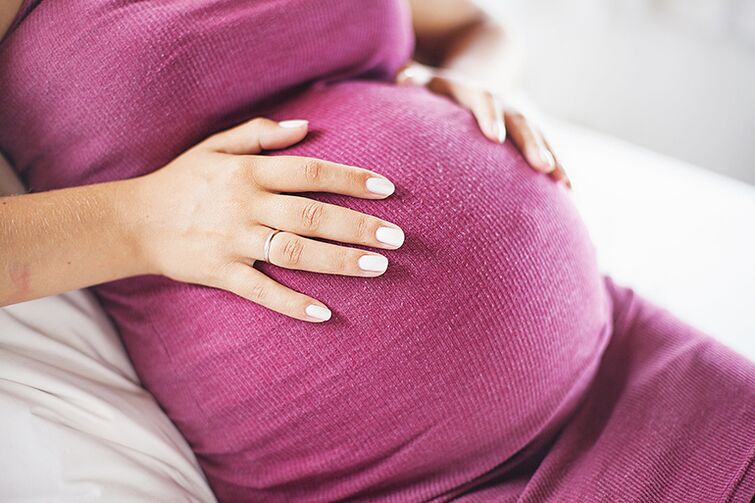
Prepare for septoplasty
Straightening the nose is performed after testing (for HIV, syphilis, coagulogram), consultation with a specialist (therapist, ENT doctor, anesthesiologist), premedication and anesthesia.
At night it is recommended not to eat later than 6 pm and clean the intestines.
It is important to clean the oral cavity (to cure all diseases, including sore throat, rhinitis, pharyngitis).
For women, it is recommended to restore the correct shape of the nose 2 weeks after menstruation.
Characteristics of the postoperative period
After surgery to correct the nasal septum, it is necessary:
- wear cotton turundas on the nose for 1-2 days;
- taking antibiotics for prophylactic purposes;
- observed by a doctor (the specialist should rinse the nose, clean it of crusts and blood).
Prohibition during the recovery period
After rhinoplasty, it is recommended:
- avoid high loads;
- reluctant to visit baths and saunas;
- don't pick your nose;
- don't be too cold;
- excluding pressure and temperature drops (pushing flight, climbing, swimming).
Effectiveness of surgical interventions
Photos of people before and after surgery differ dramatically.
Eliminating blemishes eliminates cosmetic blemishes and all symptoms, making breathing easier.
Its efficiency reaches 95-100%.
Complications after correction of the nasal septum
Correction of the nasal septum at the current stage of medical development, the operation is simple. But there may still be postoperative complications.
Consequences of such surgery are adhesions, tissue fusion, formation of hematomas or abscesses, infection, allergy to anesthesia, damage to the ethmoid plate, decreased odor, perforation, blurred vision and nerve damage.




















